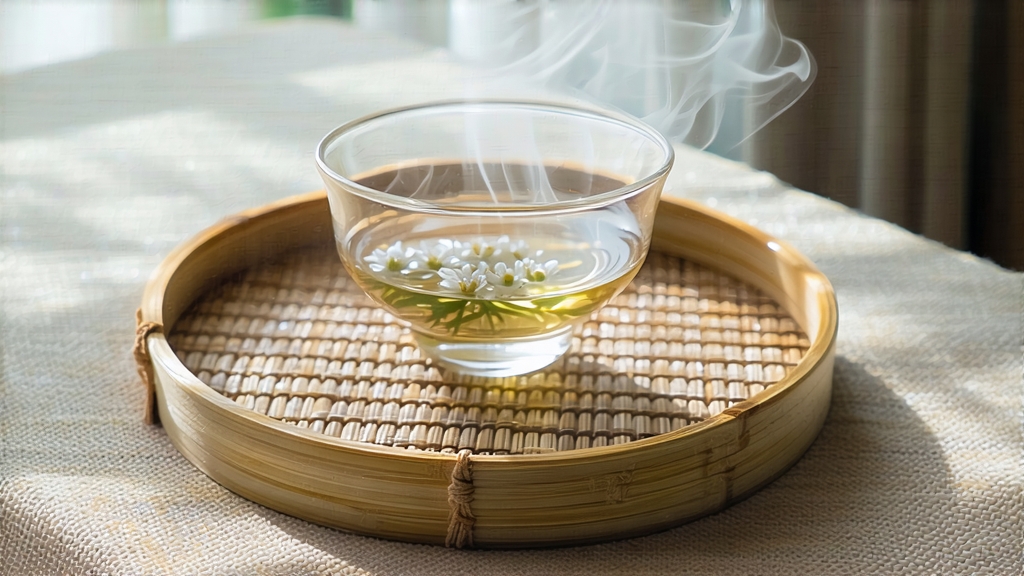
Among the six major families of Chinese tea, white tea is the most quietly radiant, and within that family Silver Needle—Bai Hao Yin Zhen in Mandarin—occupies the highest throne. International drinkers often meet white tea through generic “white peony” bags, yet remain unaware that Silver Needle is the original, minimalist expression of the leaf: nothing but an unopened bud, silver-green and downy, plucked for only a few spring mornings each year. To understand China’s tea imagination—its reverence for restraint, seasonality, and the invisible labor of air—one must begin with this single bud.
Historical whispers place Silver Needle’s birth in the early Qing dynasty, around 1796, in the granite hills of Fujian’s Taimu Mountain near the coastal town of Fuding. Local chronicles speak of a sudden frost that blackened every mature leaf; desperate growers picked only the still-pale buds, laid them on woven bamboo trays, and left them to the sea breeze. The resulting liquor was so unexpectedly sweet, so crystalline, that tribute commissioners carried it to the imperial court in Beijing. By the late nineteenth century, Fuding’s Silver Needle was already bartered along the Tea Road to Siberia, wrapped in rice-paper and packed into yak-skin satchels. The 1915 Panama-Pacific International Exposition awarded it a gold medal, sealing its global reputation long before the modern specialty-tea revival.
Strict Chinese national standards confine genuine Silver Needle to two micro-appellations: Fuding and the neighboring county of Zhenghe, both within Fujian province. Fuding’s terroir—acidic granitic soils, subtropical humidity, and the mineral mist rolling off the East China Sea—encourages the cultivar Fuding Da Bai Hao, whose buds can reach 3.5 cm, plump with amino acids and clothed in a visible ermine of white hairs. Zhenghe sits slightly higher and cooler; its Xiao Bai Hao bushes yield shorter, sturdier buds with a quieter fragrance, more apricot than orchid. Purists debate the two styles the way Burgundy lovers argue Côte de Nuits versus Côte de Beaune, but both qualify as authentic Silver Needle.
The craft is disarmingly simple on paper, mercilessly difficult in practice. Picking begins when the morning dew still clings and ends before the sun climbs to 30 °C; only the “dragon’s tooth” bud—straight, unopened, no leaf attached—is snapped between thumb and forefinger. Experienced pluckers fill a bamboo basket in forty minutes; five kilograms of fresh buds shrink to one kilogram of finished tea. The buds are then spread on reed trays exactly three centimeters thick and left to wither for thirty-six to forty-eight hours. During this marathon of waiting, moisture drops from 75 % to 12 %, enzymatic oxidation inches forward to perhaps 5 %—too little to be called real oxidation, yet enough to round the edges. The master’s skill lies in reading the weather: on humid days, trays are shifted into a gentle breeze from electric fans; on arid afternoons, wet burlap curtains are hung to raise ambient humidity. Finally, the tea is baked for minutes, not hours, at temperatures below 60 °C, just enough to fix the residual enzymes without caramelizing sugars. No rolling, no kneading, no pan-firing: Silver Needle is the closest tea comes to a naturally dried flower.
Because the leaf structure remains intact, brewing must be equally non-invasive. A tall, heat-retaining glass—ideally 250 ml—allows the foreign guest to watch the ballet of buds standing upright, then slowly sinking like miniature submarine periscopes. Water should be spring-soft and 75 °C; hotter temperatures extract the vegetal saponins that muffle sweetness. Use one gram of buds per twenty milliliters, an extravagant ratio justified by the bud’s low surface area. After a ten-second rinse to awaken the hairs, the first infusion is twenty seconds, the second fifteen, then add five seconds for each subsequent pour. A single portion will yield six luminous steeps, each revealing a new stratum: the opening note is fresh lychee and cucumber skin, the middle steeps deepen into white peach and vanilla orchid, and the final cups whisper of mineral spring water and faint bamboo sap. Unlike green tea, Silver Needle rarely turns bitter; instead,